
Rediscovering Japan

Rediscovering Japan
Travel (Funabashi Daijinguu (Chiba))

by tomizuta
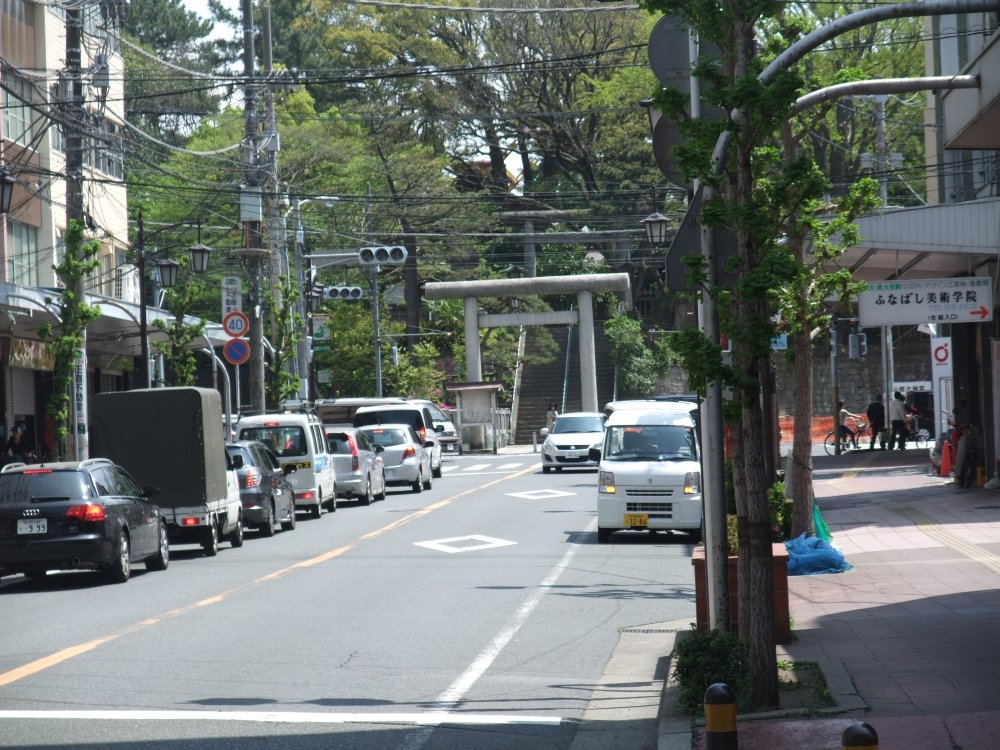
Eastern fringe of Honcho-doori. Northern entrance to Daijinguu in front.
I first moved into Funabashi 35 years ago. Although relatively unknown, there is a lot of history to rediscover in Funabashi.
HANAMI on the banks of Ebigawa in Funabashi is very popular as you see in the article on Rikugien and Ebigawa. Funabashi
is an old city, and the name can be found in historical documents dating
back to the 9th century. In the Edo period it was a lodging village on
the Narita kaido as well as being a fishing village on the Tokyo Bay. It
is located halfway from Narita to central Tokyo, west of Makuhari Messe
and east of Tokyo Disneyland in Urayasu city. A lot of land reclamation
has been made in Tokyo Bay from the last century. The shoreline in the
old days was National Road 14, running east/west about one kilometer south
of JR Funabashi Station.
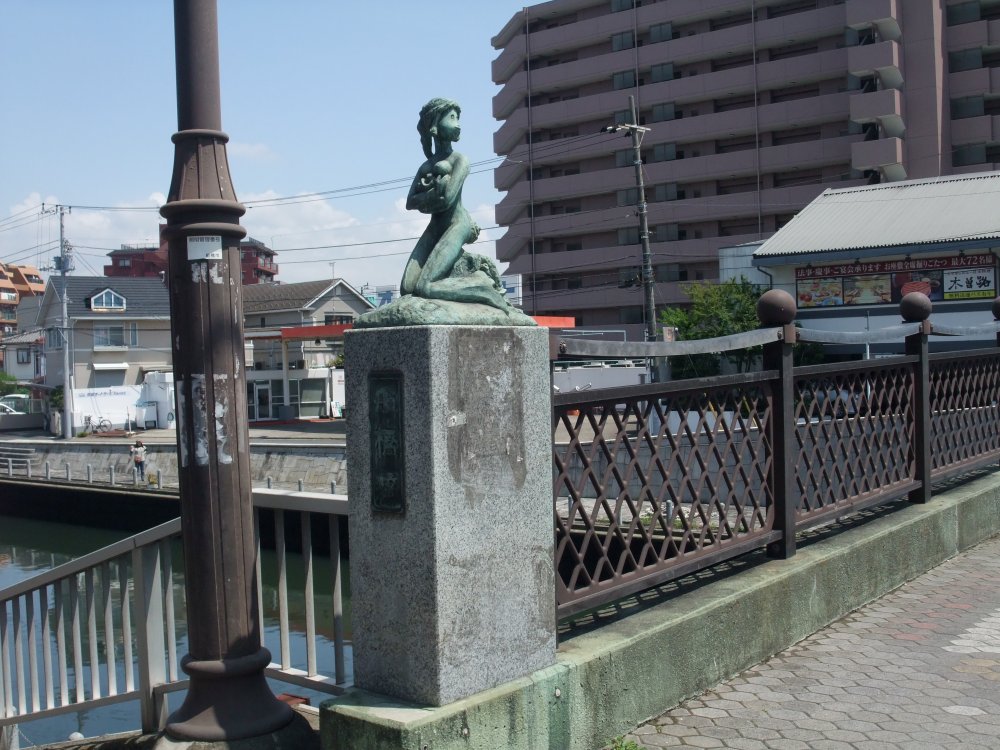
We found a KAPPA on the edge of Funabashi Bridge on National Road 14. Daijinguu
is behind the purplish building. For more on KAPPA see Iwate Part 2.
In between JR Funabashi Station and National Road 14 is a road called Honcho-doori
running about two kilometers east/west. Honcho means main town. If you
find a place called Honcho anywhere in Japan, it means that that area is
or was the town center of the city. Travel honcho-doori to the east, and
you will come up to Funabashi-Daijinguu, which must have been the eastern
perimeter of Funabashi in the old days. Daijinguu means "Grand Shrine".
The true name of Funabashi Daijinguu is Oohi Shrine, but is known by the
locals as Daijinguu. The oldest record of the shrine is from the 9th century.
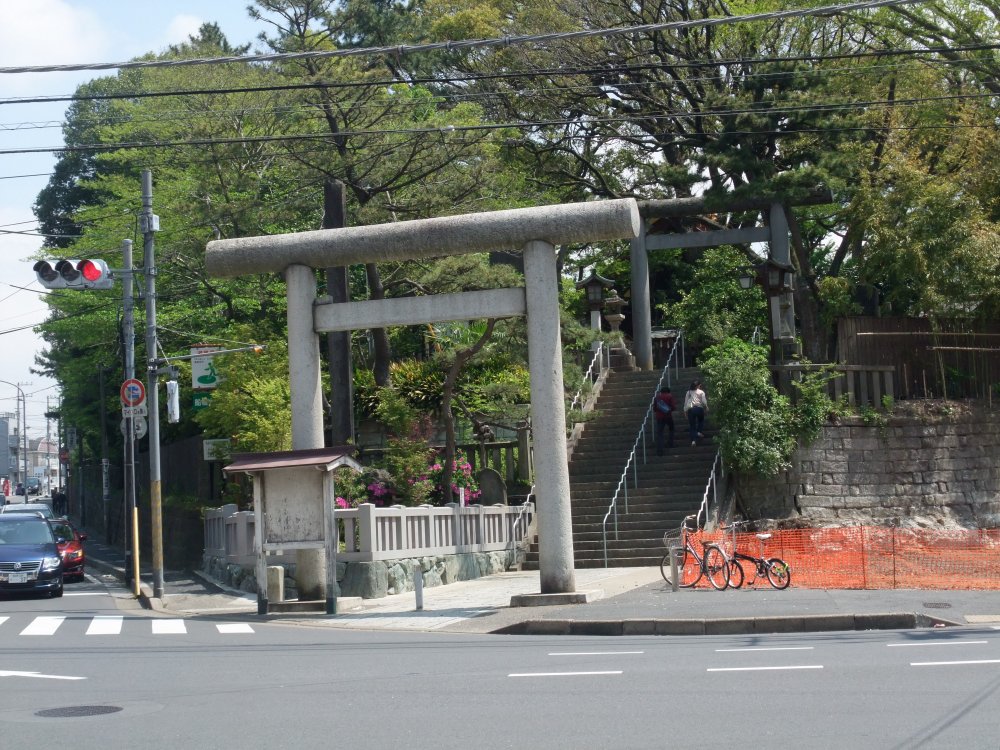
Northern entrance to Daijinguu from Honcho-doori.
There are still a handful of shops on Honcho-doori dating from the Edo
era. It must have been a very busy place on the Narita kaido, especially
close to Funabashi-Daijinguu. It is quite customary to find shops selling
WAGASHI (Japanese sweets) and soba restaurants close to major shrines and
temples. Sadly a lot of them have closed in Funabashi due to the change
in times. Many in Funabashi commute to work in Tokyo, and the city has
lost a lot of its past heritage and become more modernized. However, there
has been little change to Funabashi-Daijinguu. Go up the steps to the shrine
from Honcho-doori, and follow the route to the HONDEN (main building).
(For HONDEN, see article on Izumo) On New Yearfs Day, hundreds of thousands
come to visit the HONDEN to pray for a good year.
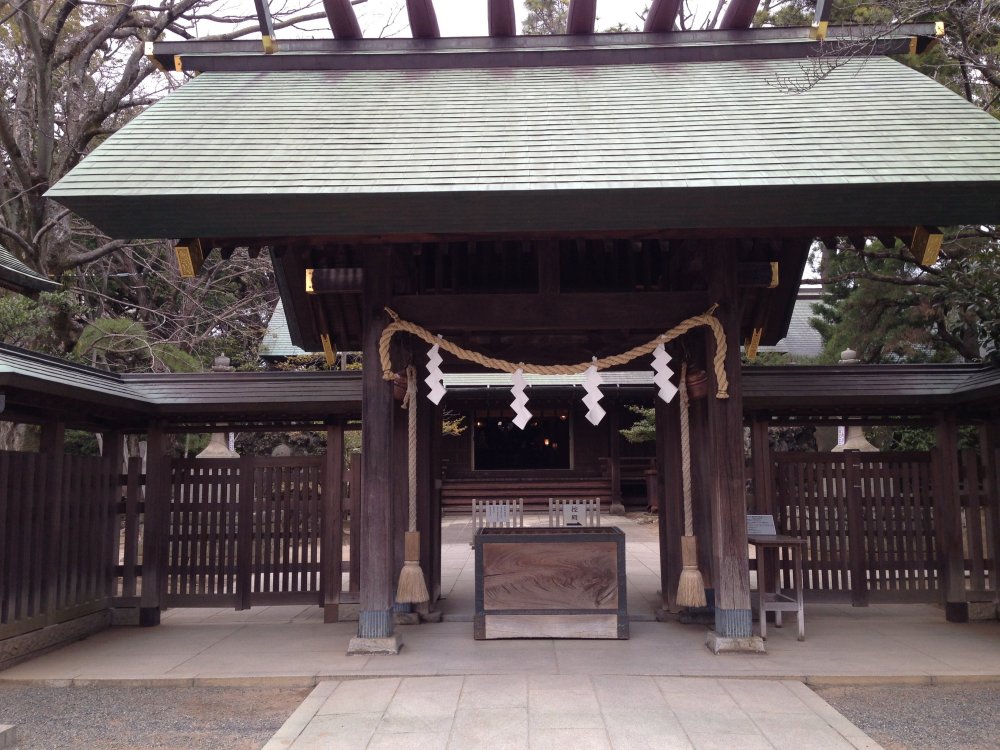
Honden of Daijinguu. Note the SHIMENAWA at the entrance gate.
The main route to the HONDEN is from the south entrance just north of National
Road 14, and for the first three days in January every year, temporary
food and game stores open on both sides of the main route to serve the
visitors. They are the same type of shops that set shop during the cherry
blossom period at Ebigawa (see Rikugien/Ebigawa). At a Shinto shrine, you
will notice a thick rope with some white tape and hay hanging down. This
is called SHIMENAWA. It is to protect and keep the evil spirits out of
the area. The rope represents clouds, the white tape is lightning and the
hay is rain. It is believed that SHIMENAWA originated from a prayer for
a good harvest as can be seen from the three elements of nature desirable
for a good harvest.
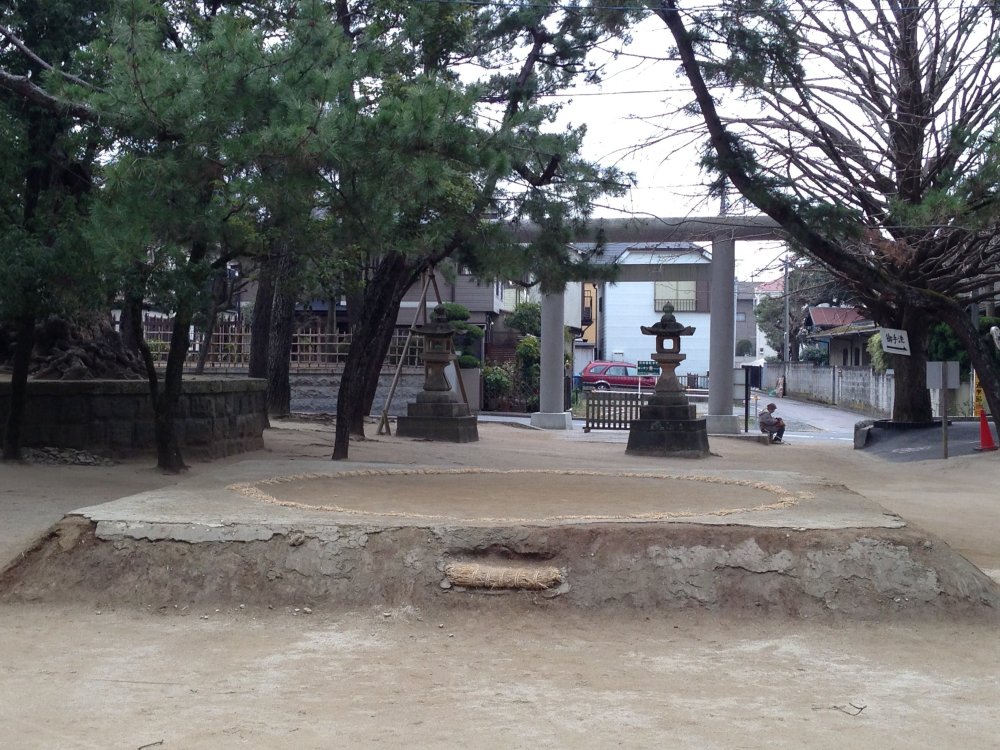
The Sumo bout ring in Daijinguu.
In Sumo, the last wrestlers to be introduced are the Yokozuna champions.
You will notice that they wear SHIMENAWA around their waists. Sumo also
must have originated from a ritual to pray for or offer thanks to a good
harvest. Off the main route to the HONDEN, you will come across a sumo
bout ring. The first Tokugawa shougun Ieyasu had a villa for hawk hunting
in Funabashi.
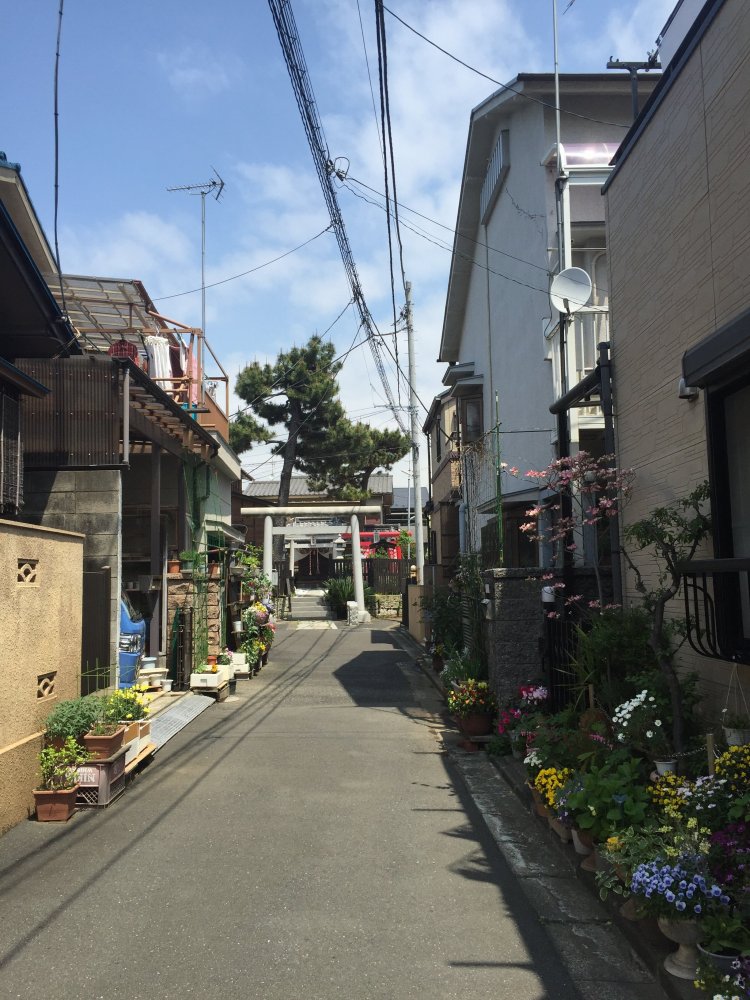
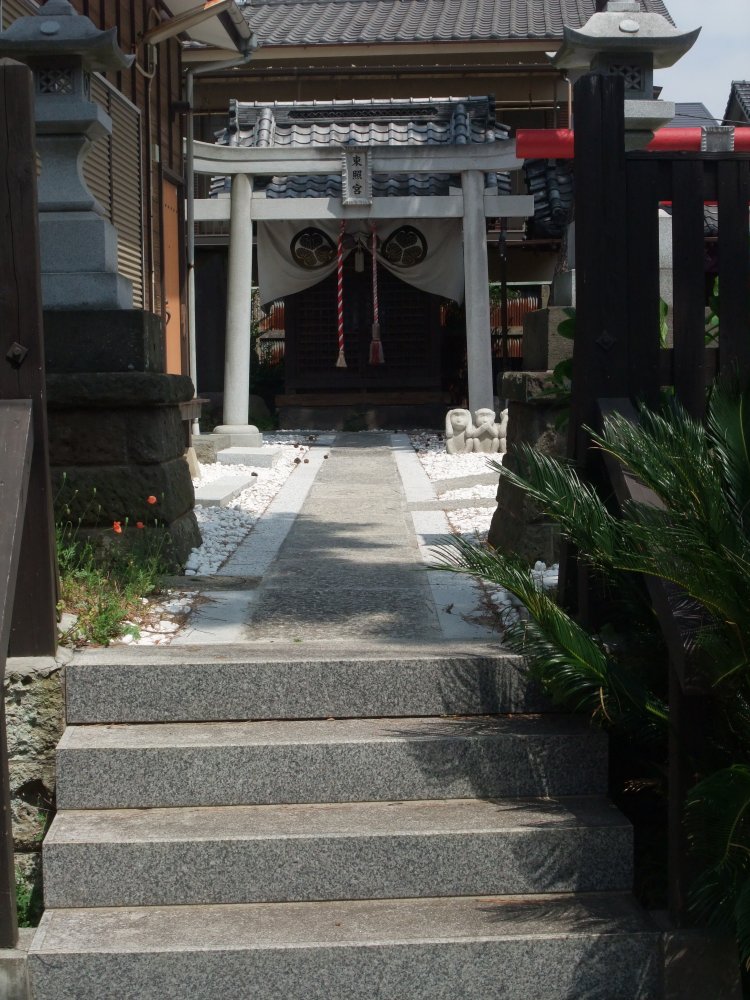
Tucked away in a side alley from Honcho-doori is Toushouguu Shrine where
Ieyasu's villa is thought to have been.
It is said that in 1590 AD, more than 10 years before he became shogun,
a sumo bout took place here in his presence. To date, an amateur sumo bout
is held in front of the gods in October, Moving north from the sumo ring,
you will notice a lighthouse atop a hill in the back of the shrine. A lighthouse
served as a guide for the fishermen from the Edo era.
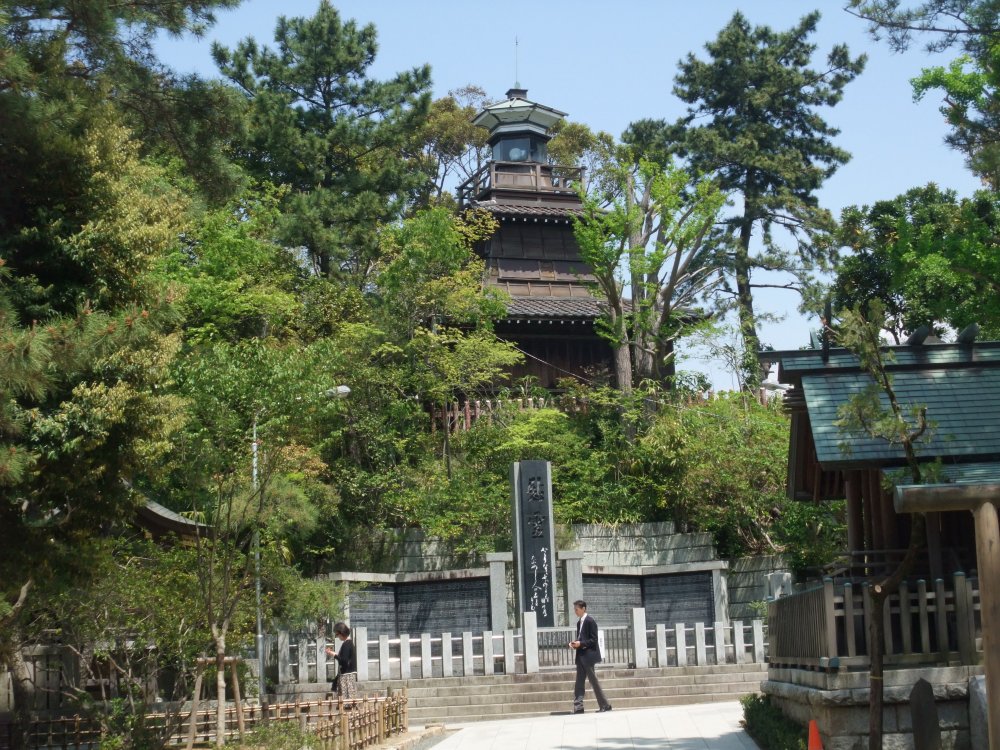
The lighthouse in the back of Daijinguu
The former lighthouse was lost in the war between the supporters of the Tokugawa shogun and the Meiji new government in 1868, and was rebuilt in 1880. It is a good reminder to us that the Daijinguu once sat on the sea coast.
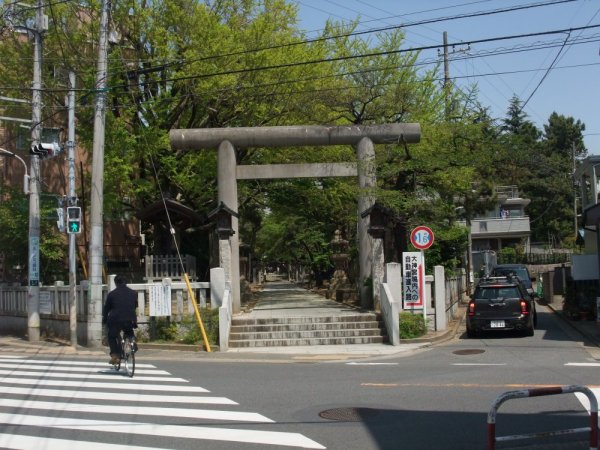
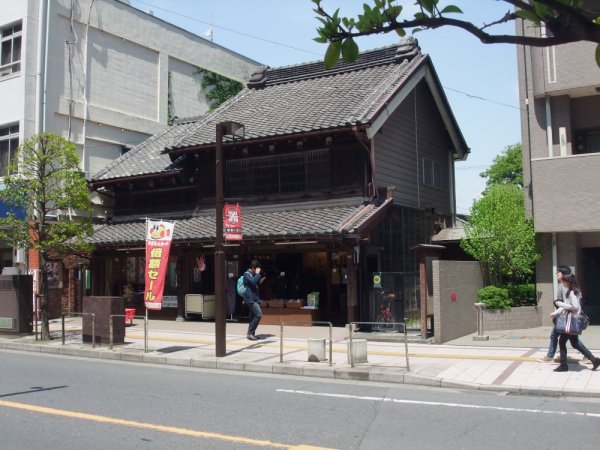
Main entrance from the south to Daijinguu (left) and an old shop on Honcho-doori
(left)